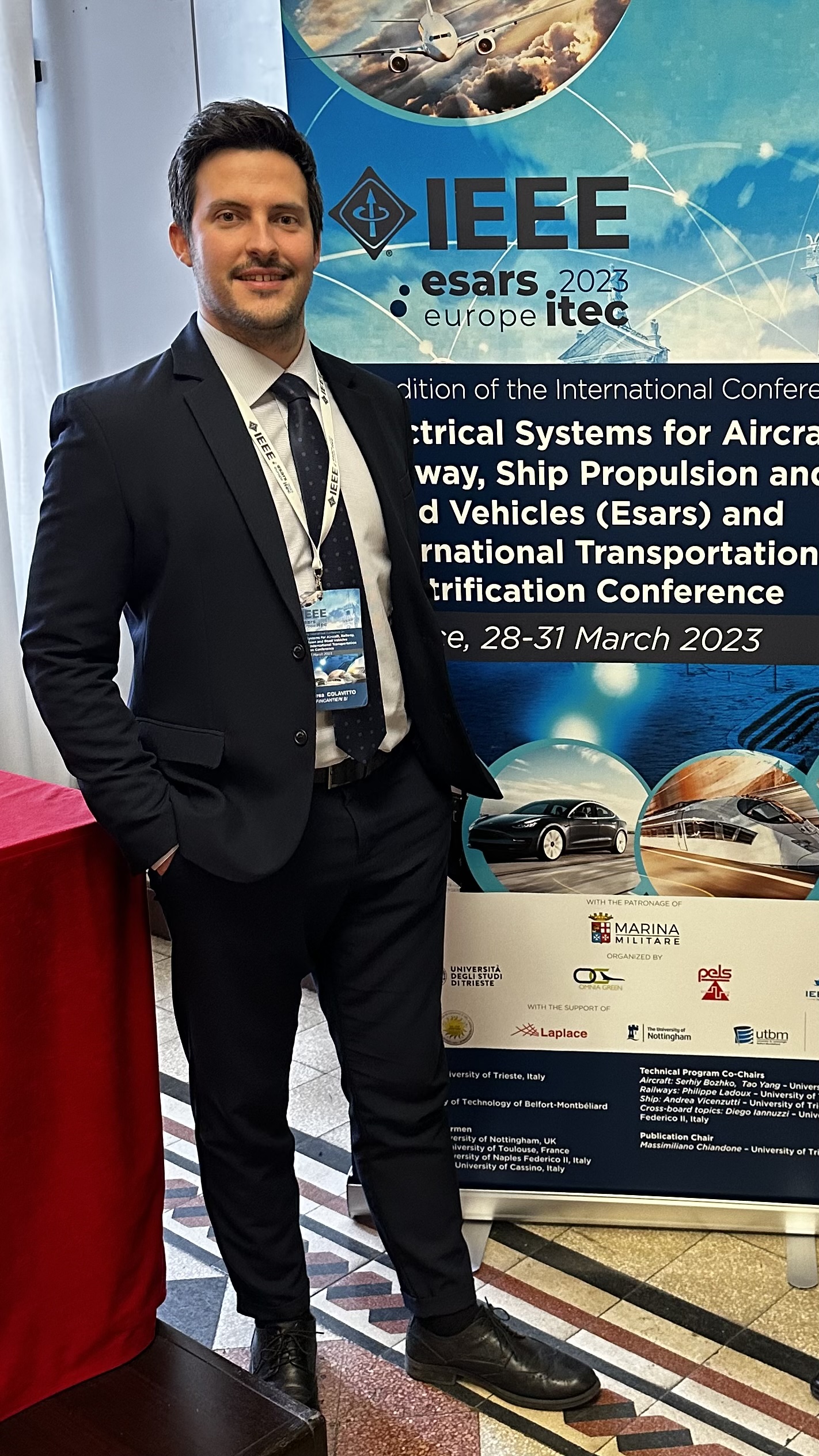Andrea is the head of research & innovation at Fincantieri SI, a system integrator company belonging to the Fincantieri Group, specialized in providing innovative and greener solutions for the onboard power systems to match sustainability and environmental requirements for the maritime sector. He is also the SEABAT project WP1 leader.
 What was your original motivation to become a researcher?
What was your original motivation to become a researcher?
My initial motivation was definitely the curiosity along with the desire to meet new people that could inspire me. Moreover, many years ago I chose to become an electrical engineer to contribute to the spread of innovative and sustainable solution aiming at reducing the human-related carbon footprint. I would like to leave the world at least at little bit better place than I found it.
Nowadays, there is a huge need of a multidisciplinary approach to stop the climate change and doing steps forward through innovation. Being active in the research field means to meet experts with different backgrounds, but with the same common goal.
What expertise and facilities does your team have to meet those objectives?
As system integrator, Fincantieri SI has already installed multi-MWh battery systems onboard also providing the Energy Management System (EMS) for an optimized management of the power flow. Moreover, we have a huge knowledge of the maritime industry as well as of the shipowners needs. Our team is composed mainly by engineers with a deep know-how on the integration and commissioning of the electrical equipment onboard that allow us to add value to SEABAT.
What is your (main) research area today?
Today my research area is focused on the decarbonization of the maritime sector providing innovative solution for the onboard power systems. The main goal is to provide tailored solution to the customer to enhance the management and control of the power plant for both cruise ships and inland waterways vessels. The ship fuel consumption is optimized through the installation onboard of greener power sources like batteries and fuel cells, for instance. The final aim is to reach the net-zero emissions as soon as possible.
What is the main objective of your team in SEABAT?
Our main objective at SEABAT is to provide the initial input to the project by analyzing the market need and regulations. Different ships have different needs in terms of peak power demand and functionalities. Thus, an insight on the market needs is the starting point to meet in an efficient way the several operational profile requirements. That is the reason why the SEABAT project breakthrough approach fits for the purpose: using both high-power and high-energy batteries within the same battery system to fulfill all the ship power system needs.
What expertise and facilities does your team have to meet those objectives?
As system integrator, Fincantieri SI has already installed multi-MWh battery systems onboard also providing the Energy Management System (EMS) for an optimized management of the power flow. Moreover, we have a huge knowledge of the maritime industry as well as of the shipowners needs. Our team is composed mainly by engineers with a deep know-how on the integration and commissioning of the electrical equipment onboard that allow us to add value to SEABAT.
Which aspects of your research at SEABAT do you believe are the most innovative and what unique opportunities offers SEABAT to yourself and/or your organisation?
The maritime sector is one of the most conservative since shipowners want to minimize the risk of the installation of new equipment onboard. Through the research carried out during the first steps of the SEABAT project, we have carefully analyzed the needs for the different types of ships resulting in a breakthrough hybrid battery system that will contribute to reduce the risks and the costs for the shipowners. In addition, this hybrid approach will strongly contribute to the decarbonization process of the existing and newbuild ships. SEABAT offer us the unique opportunity to participate to the hybrid battery system design and improve our knowledge in the field of lithium-ion technologies. By taking part to this project, we have not only built valuable partnerships, but we will also strongly enhance our value proposition to the customer reaching our company’s aim.
How do you see the future use of the SEABAT-results and the impact of SEABAT-project in our daily lives?
The SEABAT project will have a major contribution in the spread of energy storage systems installation onboard thanks to the new hybrid approach and therefore it will have a great impact in paving the way for a greener future for the maritime sector. Of course, a cruise ship fully powered through batteries is unimaginable, but SEABAT will be a key enabler for the full electrification of smaller vessels.